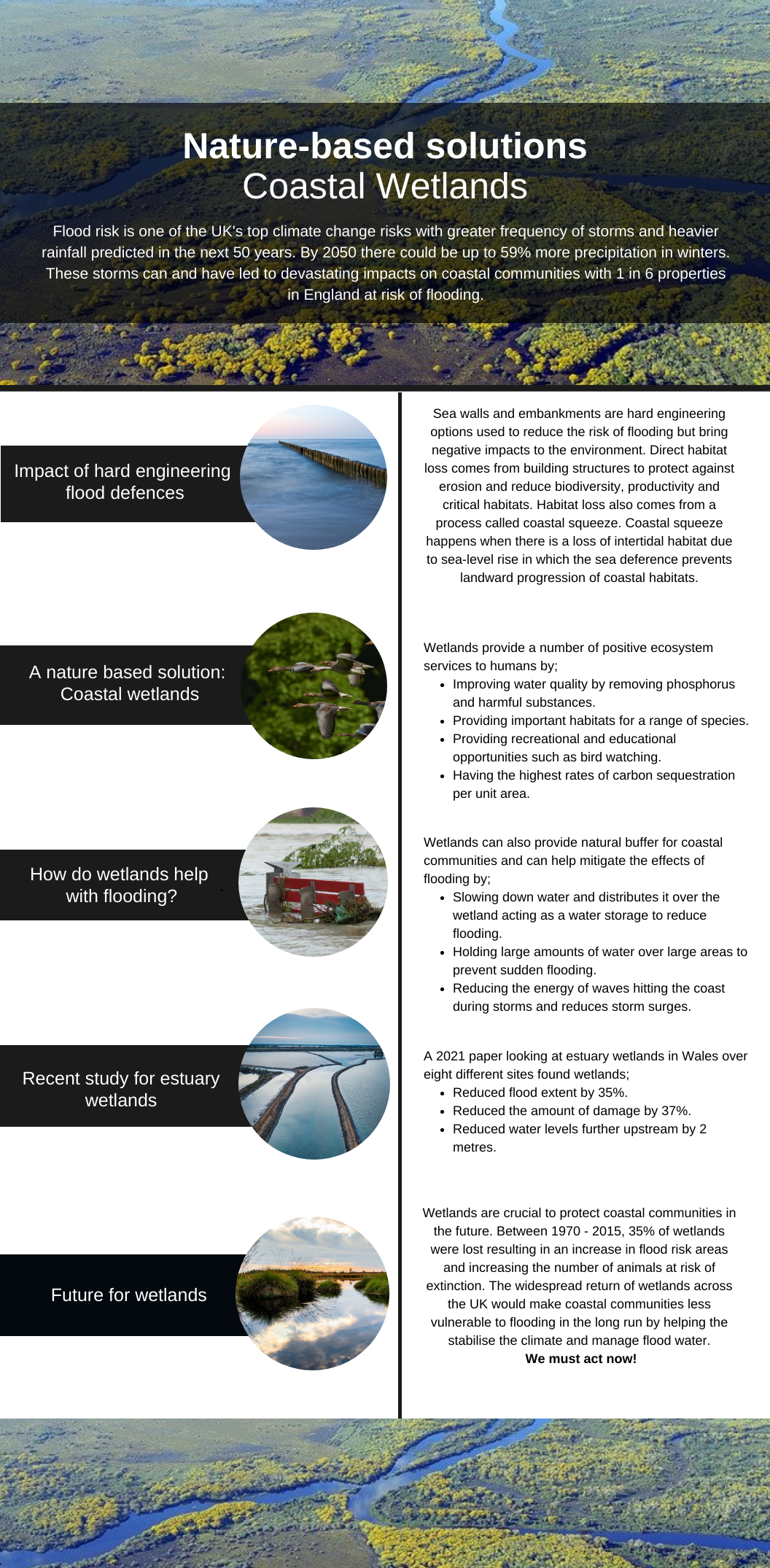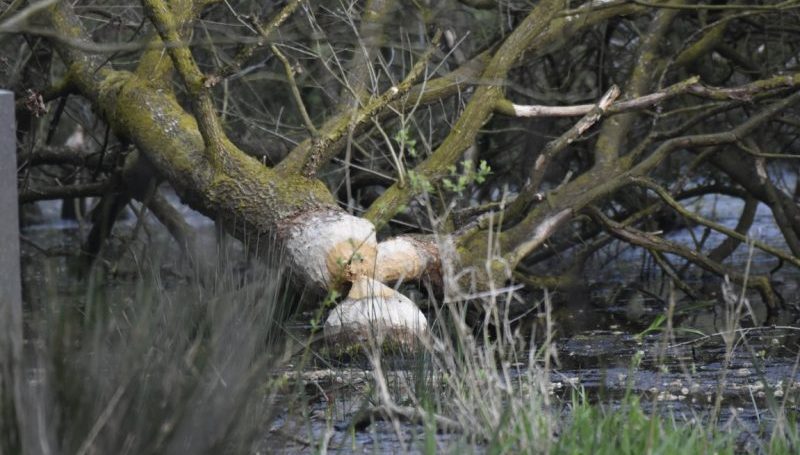Flood risk is one of the UK’s top climate change risks, with a greater frequency and strength of storms predicted in the next 50 years. In the last few years alone, there has been an increase in the number of extreme storms and heavy rainfall events. By 2050 there could be up to 59% more precipitation in winters. These storms can and have led to devastating impacts on coastal communities with 1 in 6 properties in England at risk of flooding.
While hard engineering options such as building artificial structures like floodwalls, seawalls, or embankments in flood risk areas can reduce the risk of flooding, they have a negative impact on the environment and can threaten wildlife through direct loss of habitat, causing a reduction in biodiversity. Damage can also be caused by indirect loss from coastal squeeze. Coastal squeeze happens when there is a loss of intertidal habitat due to sea-level rise, in which the sea deference prevents landward progression of coastal habitats. These coastal habitats would normally progress landward and migrate inland, but due to hard engineering options, there is no room for this to happen, resulting in habitat loss.
However, there are alternatives to artificial structures, such as Nature-based solutions, that can reduce the impact of storms in the UK, and one of these options is the use of coastal wetlands.
Coastal wetlands are areas covered by either salt, fresh or brackish water, either seasonally or permanently. The greatest ecosystem service benefit associated with wetlands such as saltmarshes, mangroves and swamps, are coastal risk management, climate regulation, and their value as a habitat. Despite how important they are to the planet, they cover less than 1% of the world’s surface.
Wetlands can;
- Improve water quality by removing excessive phosphorus and other harmful substances to help with clean drinking water for humans and better water quality for wildlife.
- Provide habitat for wildlife. Wetlands are some of the most biodiverse habitats on the planet and provide homes to a huge range of species.
- Provide recreational opportunities such as bird watching, as birds use wetlands to breed, nest and rear their young.
- Provide educational opportunities to young people and help raise their awareness of their value and sustainable lifestyles.
- Actively help in the fight against climate change by having the highest rates of carbon sequestration per unit area of all natural systems.

One of the major benefits to humans is they can be used to protect homes and businesses from flooding. Wetlands provide a natural buffer for coastal communities and towns further upstream and mitigate the effects of flooding.
Wetlands reduce the effects of flooding by:
- Storing and absorbing the water flow by trapping and slowly releasing surface water, rain, and floodwaters. This slows down the speed of floodwater and distributes it slowly over the wetland.
- Holding large amounts of water over wide areas, they absorb rainwater runoff and slow down the water flow, therefore preventing sudden floods.
- Reducing the energy of the waves that hit the coast through absorption.
- Maintaining a shallow depth away from the coast, which reduces surges.
A research paper in 20211 found that estuary wetlands in eight different sites in Wales could save up to £27 million in damage costs per estuary during large storm events. The researchers even found that wetlands could reduce water levels further upstream by two metres, further mitigating the likelihood of flooding. Furthermore, vegetation from wetlands on average reduces the flood extent by 35% and the amount of damage by 37%.
Despite the evidence of the positive impacts provided by wetlands, between 1970 and 2015, 35% were lost to changing land and water use, threatening flood risk areas. In the UK, we have lost 90% of our valuable wetlands in the last 100 years – directly and negatively affecting flood risk areas, and increasing the number of animals at risk of extinction.
The widespread return of wetlands across the UK would make everyone less vulnerable to flooding by helping to stabilise the climate and naturally managing floodwater.
Reference




